Major Publicly Funded Projects

Our Publicly Funded Projects are ambitious and driven by a vision for the advancement of science and engineering.
Major Publicly Funded Projects are research and development projects that are of substantial size with regard to their scientific and financial volume, the number of project partners and the running time. These projects are ambitious large-scale, science-driven, research initiatives that aim to achieve a visionary goal.
Our research is on the management of complexity in uncertain systems, modelled across many time and scale lengths. We are concerned with systems involving physical and chemical change and aim to manage complexity in such systems. We are making great strides that could provide scientific advancement and a basis for future technological innovation and economic exploitation in a variety of areas. Below are some the Major Publicly Funded Projects we are currently working on.
| Flagship Projects |
Investigators | |
|---|---|---|
 |
SymBioSys SymBioSys is a MARIE SKLODOWSKA-CURIE Innovative Training Network (ITN) comprising of 11 academic and industrial partners. It is coordinated by the Sargent Centre for Process Systems Engineering at Imperial College London, which is an international-leading multi institutional research centre in the area of Process Systems. The main objective of SyMBioSys is to provide a new generation of innovative and entrepreneurial early-stage researchers (ESRs) that will develop cutting-edge kinetic models for biological/biomedical processes via systems engineering research and will exploit these for designing novel biotechnological applications. The skills and competences acquired by the ESRs will open up significant opportunities: 1) working at simulation and bioinformatics companies to develop advanced software and algorithms tools; 2) working at White (industrial) and Red (medical) Biotech companies for biotechnological and biomedical applications; and 3) in the academic sector applying the developed tools for the generation of new biological insights (e.g. new insights regarding drug effects in signalling networks for diseased and intact cell systems). |
Professor Athanasios Mantalaris |
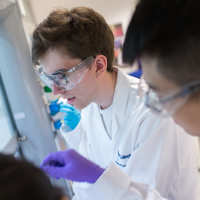 |
Qatar Carbonates and Carbon Storage Research Centre (QCCSRC)QCCSRC is a 10 year, $70m research programme funded by Qatar Petroleum, Shell and Qatar Science and Technology Park. It is the largest industry-funded research programme at Imperial and aims to provide the underpinning science and engineering to enable the optimised design and operation of large-scale (>1m te pa) carbon dioxide storage operations in carbonate reservoirs typically found in Qatar and other parts of the Middle East (and elsewhere – about 50% of oil and gas reservoirs worldwide are carbonates). The activity is a close collaboration between the Departments of Chemical Engineering and Earth Science and Engineering and involves the close interplay of experimental and theoretical/numerical modelling research. Molecular Systems Engineering and Multiscale Modelling are a key part of this activity.
The experimental work involves characterisation of the rocks, the properties of reservoir fluids mixed with supercritical CO2 and the multiphase flow of such fluids in the porous and fractured carbonate rocks. Particular challenges with carbonates (compared with say sandstone reservoirs found in the North Sea) are that their pore structure is very complex, ranging from nm to mm, and they are reactive to acidic CO2, causing the porous matrix to evolve with time during reactive flow. Imaging using X-ray micro-tomography and modified body-scanners plays a major role in this. The modelling work comprises prediction of the thermophysical properties (phase behaviour, interfacial properties, transport properties) of the fluids involved under high temperature-pressure reservoir conditions – Molecular Systems Engineering plays a major role here and is transforming our ability to predict accurately the way complex fluid mixtures behave under such extreme conditions. These models feed into simulations of multiphase fluid flow in the storage rocks on a wide range of length-scales, from the pore scale (pore network models and Lattice Boltzmann) through core and metre block scales up to the kilometre distances of CO2 plume development at the reservoir scale. Combined together, the experimental and modelling work in the programme provide an integrated multi-scale approach, linking the molecular and pore length-scales to the behaviour of bulk fluids on reservoir length-scales. Once robust reservoir models are developed, the challenge will be to use systems engineering approaches to aid in the design, optimisation, monitoring and control of these complex operations. |
Professor Geoffrey C Maitland |
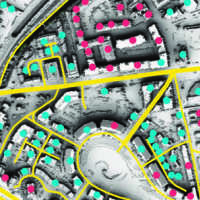 |
THERMOS (Thermal Energy Resource Modelling and Optimisation System) THERMOS (Thermal Energy Resource Modelling and Optimisation System) is an EU Horizon 2020 funded research project which aims to accelerate the development of new low-carbon heating and cooling systems across Europe, and enable faster upgrade, refurbishment, and expansion of existing systems. THERMOS kicked off in October 2016 and will be running for three years until September 2019. THERMOS is:
As part of this project the Sargent Centre is developing optimisation models to identify cost effective heat networks for satisfying the thermal energy demands in an urban area while also meeting other constraints such as emissions targets. |
Professor Nilay Shah |
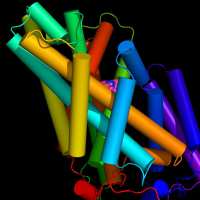 |
Frontier Engineering - Scaling up Synethic Biology Our Frontier Engineering project aims to utilise advances in Synthetic Biology in order to create a paradigm shift in manufacturing of high value products. It brings together experts from the Departments of Chemistry and Chemical Engineering and the Centre for Synthetic Biology and Innovation. |
Dr Cleo Kontoravdi |
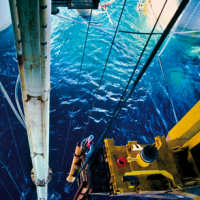 |
Flexible Routes to Liquid Fuels from CO2 by Advanced Catalysis and Engineering
|
Dr Benoît Chachuat |
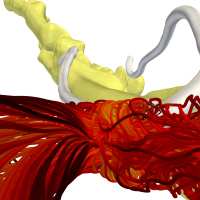 |
EPSRC Centre in Emerging Macromolecular Therapies | Professor Lazaros Papageorgiou |
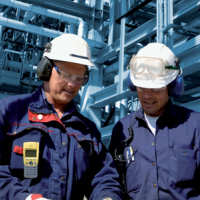 |
Pronto The Marie Curie PRONTO European Industrial Doctorate project (2016-2019) started in Jan 2016. Professor NIna F. Thornhill is the coordinator. A European Industrial Doctorate is a scheme in which PhD students spend long placements of at least 18 months with an industrial parter. It also involves researcher employed by the industrial parters of the PRONTO consortium who undertake PhD studies with one of the PRONTO university partners. |
Professor Nina F Thornhill |
| Sargent Centre Flagship Projects | ||


